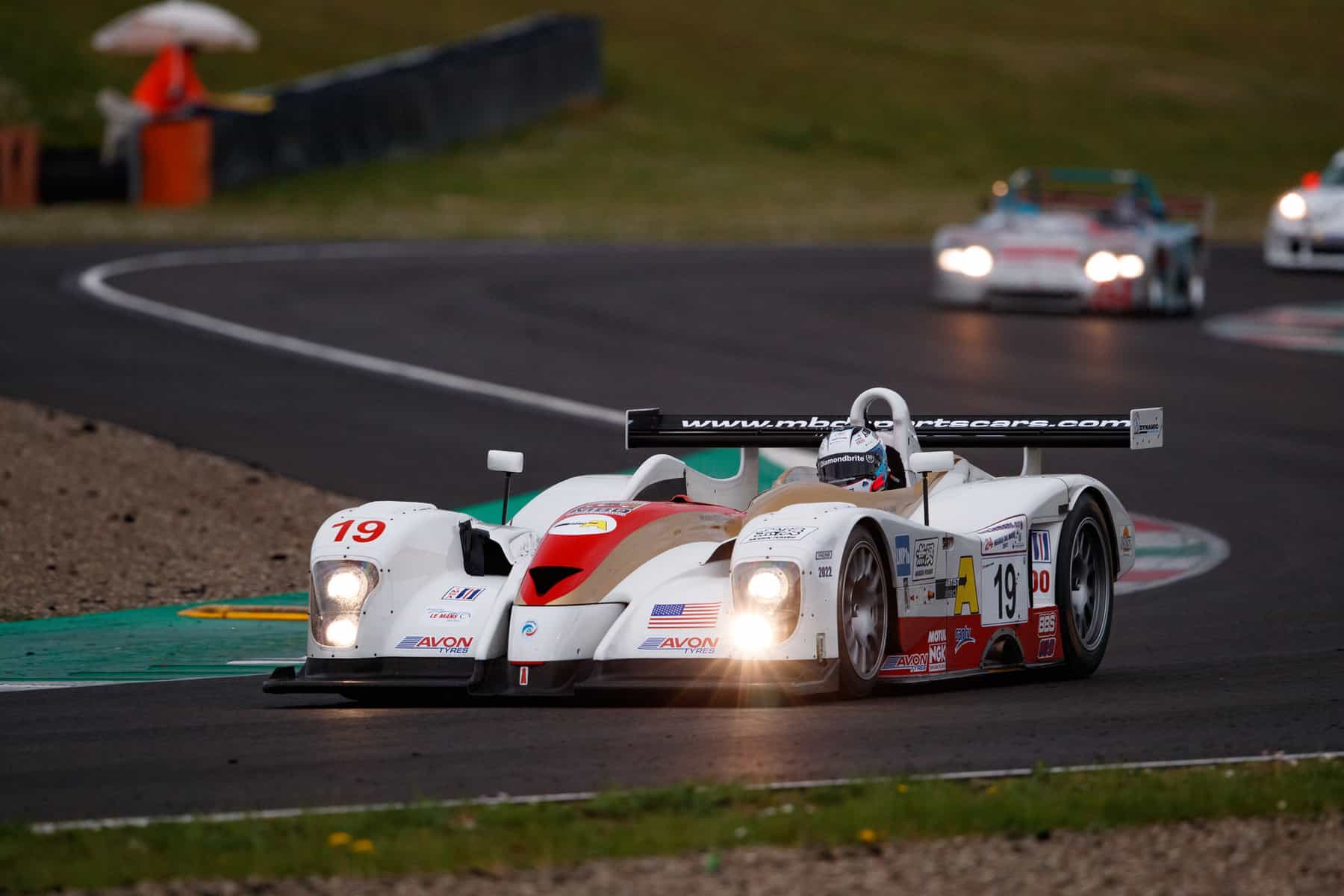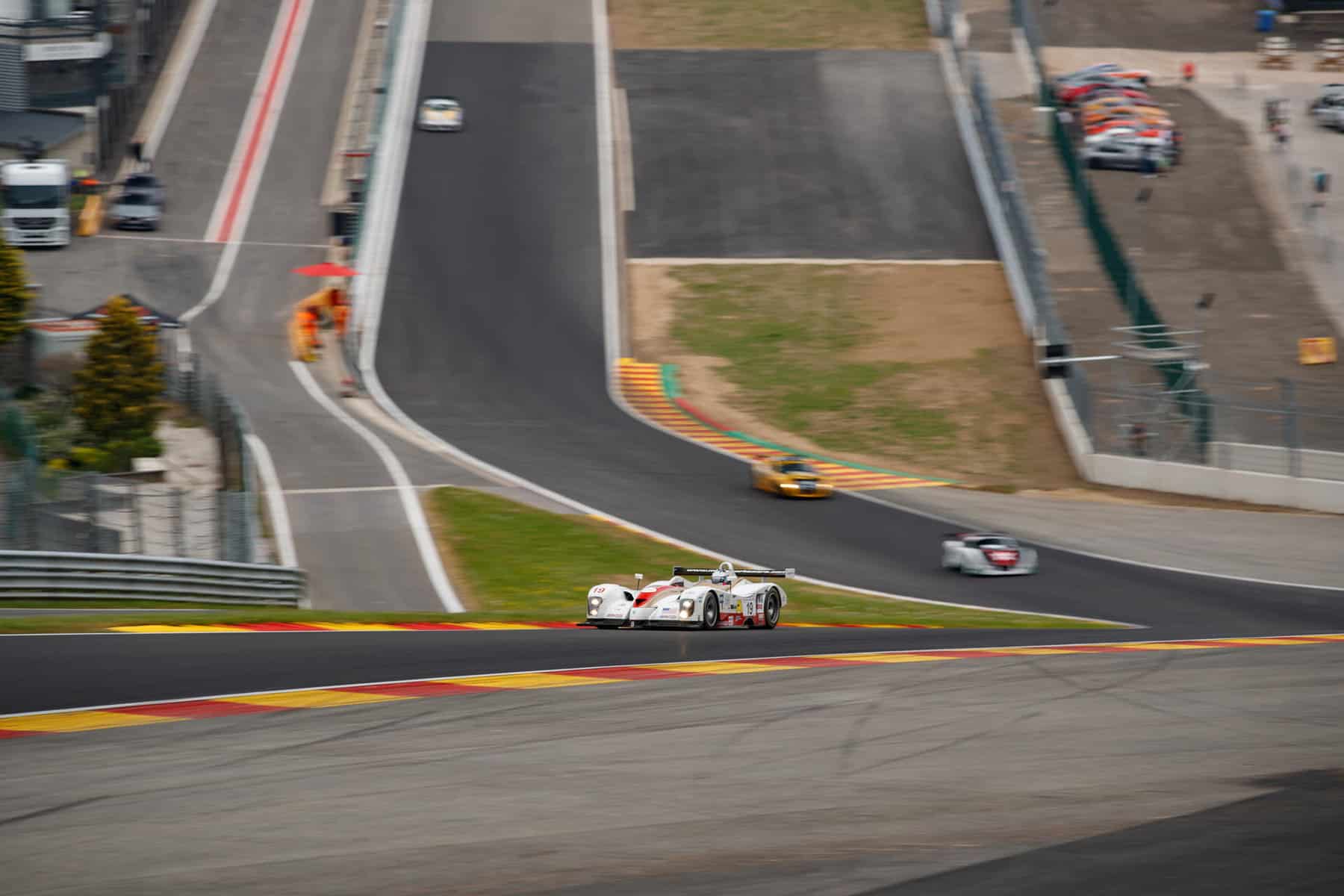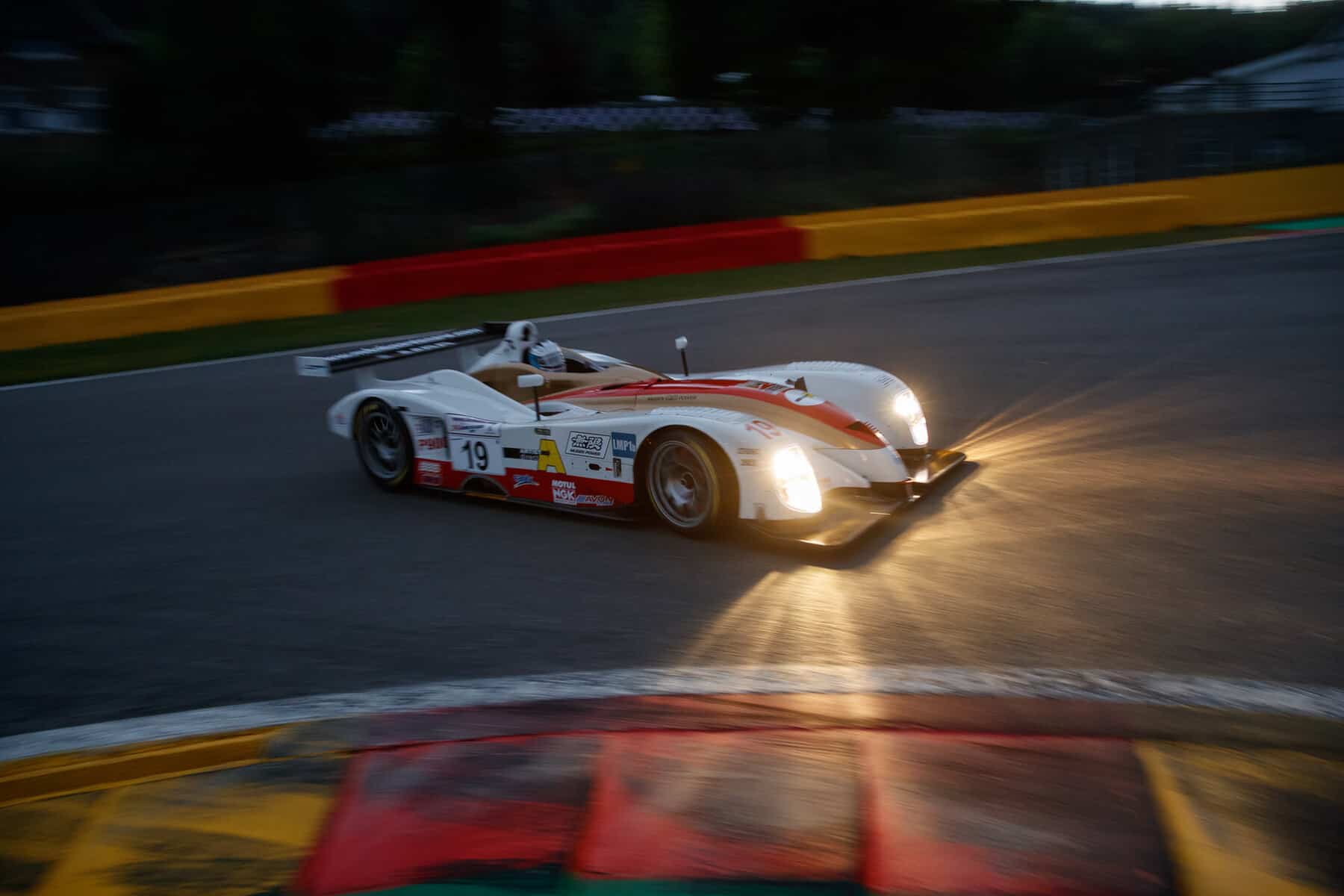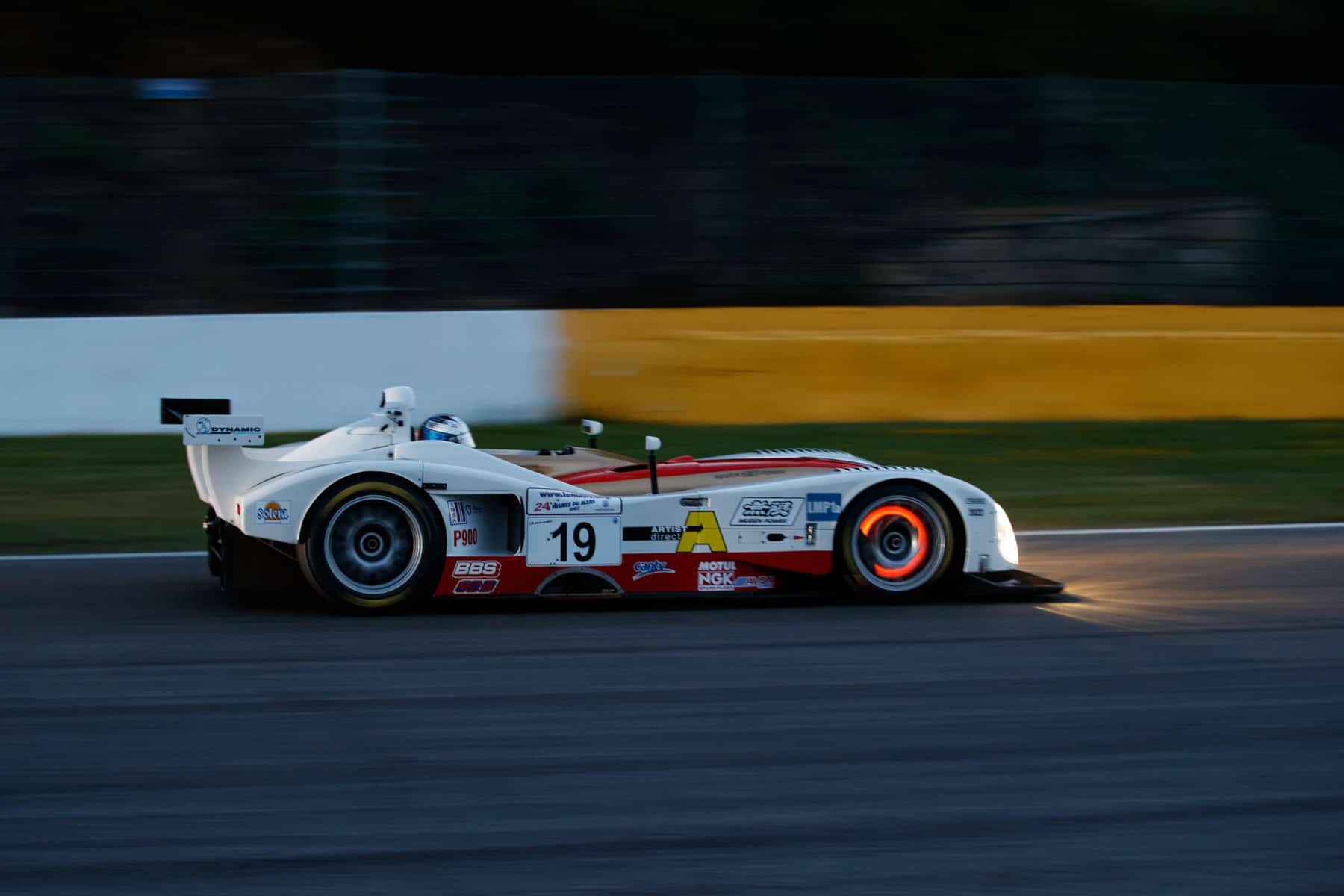Panoz LMP 07
The last front-engined, rear-wheel drive prototype in top-level racing
WORDS & IMAGES BY: WOUTER MELISSEN
“The location of the engine was not negotiable with Don Panoz,” Andy Thorby recalls, “neither was the choice of engine.” He added: “It would not have been my choice, as a designer.” The competition car in question was the Panoz LMP 07, due to race in the LMP1 category of the American Le Mans Series and at the 24 Hours of Le Mans.
It had been commissioned by Panoz from British specialist Reynard, where Andy Thorby was chief designer. Launched late in 2000, the LMP 07 remains the last front-engined, rear-wheel drive prototype to be developed for top-level sports car racing.
Panoz had been established in 1989 by Don Panoz and his son Danny, and initially produced a road-legal Roadster with a classic cycle fender shape. Looks deceive, as the second-generation Panoz Roadster AIV introduced in 1994 was more sophisticated than the 1950s-inspired body style suggested. AIV was short for Aluminium Intensive Vehicle, and the car was the first American sports car to be built predominantly from aluminum. The AIV was powered by the latest all-aluminum Ford SVT Cobra V8. The cars were produced by hand in a small facility in Georgia and most were custom finished to suit the customer’s requirements.
A hugely successful entrepreneur in the pharmaceutical industry, Don Panoz had been bitten with the endurance-racing bug during the 1990s. He decided to use some of his vast wealth to support his son’s business by backing an ambitious sports car racing program. He partnered with his son to establish Panoz Motorsport. The prize he had his eye on was the 24 Hours of Le Mans. Don Panoz quickly realized that keeping the design, development, and construction of a car capable of winning at Le Mans in-house was not possible. Instead, the company turned to Reynard Motorsport in the United Kingdom.
At that time, there were two avenues to pursue: a production GT1 car or a scratch-built LMP, or Le Mans Prototype. The GT1 car looked like the faster option, and to homologate the competition car only a single road car had to be produced. As did many others during this period, Panoz and Reynard decided to design the GT1 racing car first and then make a thinly disguised road car. To keep a link with Danny Panoz and his production road cars, Don did insist the new GT1 racer have a front-mounted engine. Another link to the Roadster AIV was the use of a Ford small-block V8, which had been further tuned for its motorsport use by another Panoz subsidiary, Élan Motorsport.
Known as the Esperante GTR-1, the first Panoz competition car debuted at the 1997 Sebring 12 Hours. Six cars were built and raced by three different teams, including DAMS and David Price Racing in Europe. It was the only front-engined car in the GT1 category and at the very highest level struggled to be competitive. In the United States several outright victories were scored and at the inaugural 1998 Petit Le Mans, an Esperante GTR-1 was classified as the GT1 class winner. Organized by Don Panoz, this race would kick-start the IMSA-sanctioned American Le Mans Series, which again was the brainchild of Don Panoz.
Having raced the Esperante GTR-1 for two seasons, Panoz had concluded that an open-top Le Mans Prototype would be more competitive. Reynard was once again tasked with the development of what would become the LMP-1 Roadster S. This was not a brand-new design, but was, for all intents and purposes, the GTR-1 with the roof chopped off. The chassis was identical, and the Élan-developed V8 was also carried over. The car proved surprisingly successful, scoring three wins and the Manufacturer’s Championship in the 1999 ALMS. A further win was scored in 2000 but the arrival of the Audi R8 had raised the bar considerably.
After four seasons racing the same basic design, the time had come to start with a clean sheet. Tasked with the design of the new car was Reynard’s Andy Thorby. His brief included two firm stipulations: the engine was to be located ahead of the driver and said engine was to be the Panoz-badged V8 developed by Zytek in the United Kingdom. Designed as a racing engine from the ground up, this was a naturally aspirated, 4.0-liter V8 derived from the engine used in F3000 single seaters. Panoz had first worked with Zytek in 1999, when the British company supplied the electric motor and auxiliary system for the groundbreaking hybrid Esperante GTR-1 that was raced at Le Mans that year.
Sticking with the front-engine layout was very much a compromise as Thorby explains: “There are no packaging advantages from the front-mid engine layout. It is worse than rear-mid engine layout due to the driveshaft from the engine to the transmission, which takes significant volume, pushes the two seats apart, and passes through the fuel tank. It is inherently heavier than a rear-mid layout.” He continues: “The only advantage was the natural weight balance. There was a tendency among the rear-engined LMP1 cars of that time for the center of gravity to be too far rearward, but the front-mid layout gave a more forward mass distribution. That suited the tires better. The stability of our cars also seemed to be less affected by track conditions.”
The customer is king as they say, so Thorby did his utmost best to design what would become the LMP 07. It was built around a central carbon-fiber monocoque section with distinct fins on either side of the cockpit. Thorby: “The fins were to meet the head-protection regulations of that time.” The rear suspension was bolted directly to the monocoque. Bolted to the front bulkhead was a steel subframe that connected the monocoque and the front crash structure, which was also constructed from composites. Mounted in between was the 4.0-liter V8. X-Trac built a transverse, six-speed sequential transaxle, which was designed specifically for the LMP 07.
The bodywork was tightly wrapped over the major mechanical components. Even though the Zytek V8 was quite low, there was a distinct hump with two circular holes over the engine. These holes fed the intakes, which were equipped with the mandatory restrictors, used to ensure a level playing field. The driver sat almost on top of the rear axle. The big, structural fins placed on either side of the cockpit doubled as mounts for the rear wing. Compared with the previous LMP-1 Roadster S, the LMP 07 had a decreased front area and the Zytek engine alone was nearly half the weight of the small-block V8 previously used.
At the first tests, the drivers were quite positive, particularly about the handling of the LMP 07. Once the car hit the track together with its rivals, the new Panoz proved to be lacking. At its late 2000 debut, the first LMP 07 proved three seconds off the pace during qualifying and slower than the LMP-1 Roadster S vehicles also entered in the race. The LMP 07 retired early on with an alternator issue. Not fast or reliable enough very much remained the issue for the LMP 07 during the opening rounds of the 2001 season. With no immediate solution available, Panoz decided, after a disastrous Le Mans, to revert to the LMP-1 Roadster S with quite a bit of success.
Apart from the unusual engine layout, Thorby recognized several reasons why the LMP 07 was ultimately not a success: “The aerodynamics were never resolved. The only wind tunnel available to us was the 40 percent tunnel at Glasgow University in Scotland. I had used this before and found it satisfactory and trusted the academic in charge of it. However, on the LMP07 program, at every test we had problems – the tunnel broke down continually. The academic had moved on and I couldn’t get the problems fixed. In the end, I terminated the program because there was no point in wasting the time money and effort of traveling to Scotland.”
Not only the engine location but also the engine itself proved troublesome: “The engine was designed to fit in the back of a chassis, as a stressed member. It was not suited to mounting on its rear face, even with substantial steel frames around it. It was also lacking torque, which was not helped by the fact that we were not able to fit the long inlet tracts necessary for good torque at relatively low revs because the driver wouldn’t have been able to see over them! The vibration cracked the engine frames and loosened the fixings at the front end of the car. It also tended to destroy the main bearing bulkheads in the engine block.”
A third issue was gearbox reliability: “I schemed the gearbox and handed over my scheme to X-Trac. To make the most of the engine’s good points (mainly low center of gravity), I had schemed a gearbox with the shafts as low as possible. I was aware that this could present problems with oil scavenge, so wanted an external multi-stage oil pump (like an engine oil pump) to give us flexibility. However, X-Trac convinced me that an internal pump driven via a large idler gear was a better solution. Unfortunately, scavenge did prove a problem, and the gearbox overheated.”
Panoz managed to recover some of the costs by selling two chassis to the MBD Sportscar team. With no obligations to Zytek, they could change engines and fitted the all-new Mugen 4.0-liter V8 instead. The cars were raced at a select number of events during the 2002 season but again with limited success. Both cars are today in British hands, and one has been meticulously prepared by John Dandy Racing. It was fielded twice in the Endurance Racing Legends series during the 2022 season. In the hands of professional racer Jake Hill, the Mugen-engined machine proved quite fast, clinching pole at Mugello. The third car is still owned by Panoz and is displayed in the factory museum.
Although the LMP 07 was not a success, Thorby is still happy with the work he did to make it work: “It was a difficult program for me personally, but I’m proud of some of the ideas and solutions to the problems that came with designing a front-engined car in a category with regulations configured for rear-engined cars.” It could also have been better: “For the rules at the time, the best engine solution was a large-capacity, low-revving engine with low internal friction. The LMP07 would have been a better car with the Ford V8, but even then, the aero would have needed to be sorted.”












